Project SIGMO: Humanoid Robot
As you may have noticed, a few projects went live in the robotics playground this week. My pet project, SIGMO (synthetic intelligent mobility), an efficient humanoid robot, is one of those projects.
A properly designed mechanism can thus walk with little power, getting closer to the walking efficiency of the homosapien. Robots like ASIMO consume lots of power to move around, whether they are walking on level ground, downhill, or up stairs. A passive dynamic robot is most efficent when walking downhill, requires a little more input when walking on level ground, and for the most part can never walk up stairs.
SIGMO uses a so-called passive dynamic design to accomplish bipedal walking. Instead of using motors to govern the kinematics of each joint, some joints are passive and thus energy is conserved. Walking is a complicated process but is largely controlled by mechanics inherent to the system.
A properly designed mechanism can thus walk with little power, getting closer to the walking efficiency of the homosapien. Robots like ASIMO consume lots of power to move around, whether they are walking on level ground, downhill, or up stairs. A passive dynamic robot is most efficent when walking downhill, requires a little more input when walking on level ground, and for the most part can never walk up stairs.
It's my goal to find a balance between the two -- essentially using two or more modes of locomotion. The motorized system rides along during flat and level walking, and engages only when directed power is needed -- such as in the event of stairs, uneven terrain, or if the robot is falling.
So far I am designing the new skeletal structure, a test bed of sorts, for the new components I will be adding shortly. The "old" SIGMO was a short (<2feet>
SIGMO 2.0 will retain this funcionality, add some more DOF, and still have room for the electronics box and power supply. The method of accomplishing this is to upsize the robot, which has always been a goal of the project. The new robot will be more lifesize -- it should be slightly taller than ASIMO, closer to 5 feet. I'm not sure on the exact size yet, but it will be several times larger than the existing model.
You can check out the project's humble beginnings at the robotics playground website.
Labels: robot, robotics playground, UPDATE
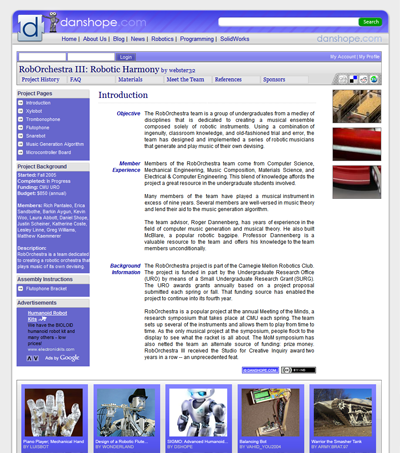
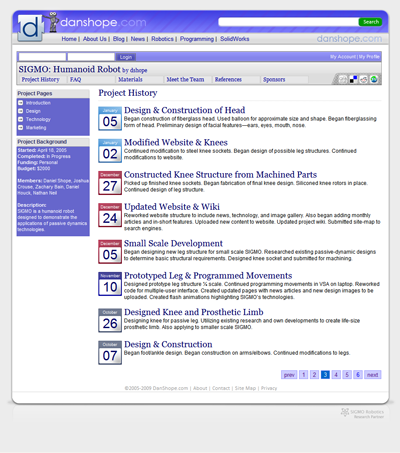
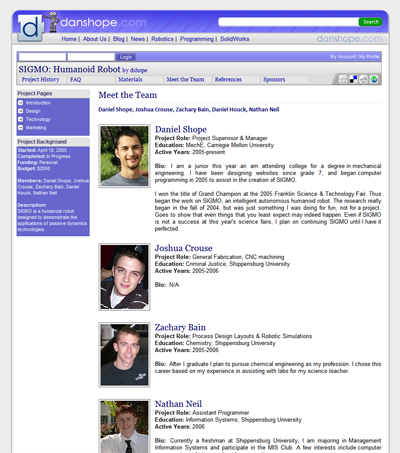
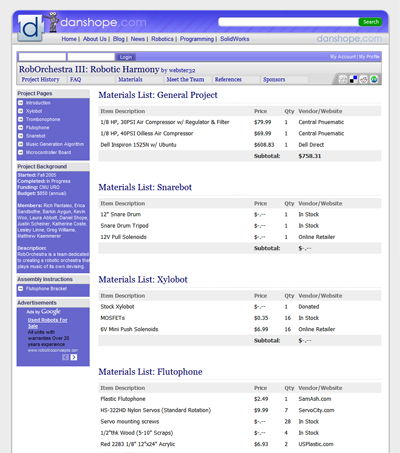
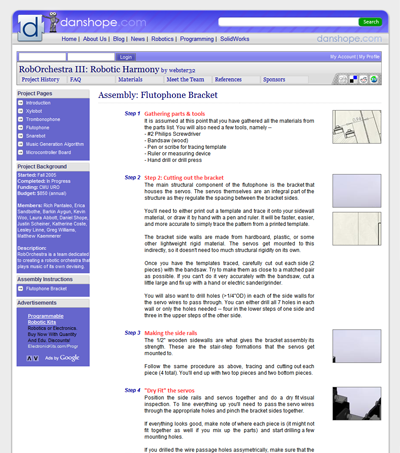
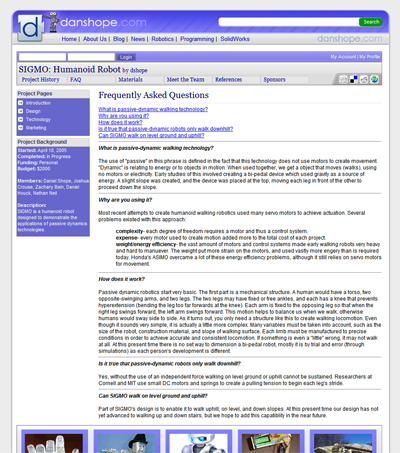
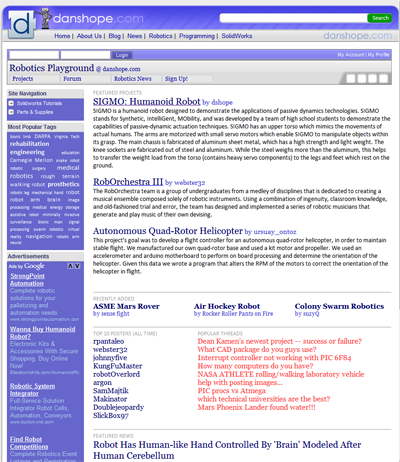
 Subscribe to DanShope.com
Subscribe to DanShope.com